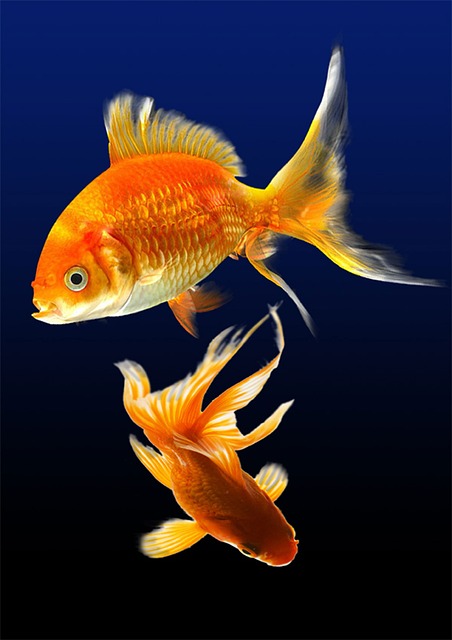Light is essential for aquascaping, enabling creation of depth and dimension in aquatic ecosystems. Understanding light-water-plant interactions is key to designing visually appealing aquariums. Appropriate lighting selection caters to different environments, enhancing plant growth or creating serene atmospheres. Creative lighting techniques elevate aquascape architecture by crafting shadows, highlighting features, and telling stories underwater.
Discover the art of aquascaping lighting techniques to create stunning depth and dimension in your aquatic haven. This guide explores how light shapes your underwater world, offering practical insights into various methods to enhance visual appeal. From understanding light’s role in aquascaping to selecting lighting for specific ecosystems, you’ll learn to orchestrate luminous arrangements that transform your aquarium into a captivating underwater landscape—a true masterpiece of aquascape architecture.
Understanding Light's Role in Aquascaping
Light plays a pivotal role in aquascaping, serving as an essential design tool for creating depth and dimension within aquatic ecosystems. By manipulating light intensity, direction, and color, aquascapers can transform their tanks into stunning visual displays that mimic natural habitats or create surreal underwater landscapes. In the realm of aquascape architecture, understanding how light interacts with water and plants is crucial for designing visually appealing and ecologically balanced aquariums.
Effective use of lighting allows for the enhancement of different elements within the tank, from the delicate textures of live plants to the vibrant colors of fish and decor. Strategically placed lights can create shadows, highlights, and depth, adding complexity and realism to the aquascape. This is particularly important in larger tanks where ensuring uniform lighting can be challenging but necessary for the health and well-being of the aquatic inhabitants.
Techniques to Create Depth and Dimension
Aquascaping lighting techniques play a pivotal role in creating depth and dimension within an aquarium’s landscape, transforming it from a flat display into a vibrant, three-dimensional ecosystem. One effective method involves employing varying light intensities; by shining brighter lights on foreground elements and dimmer lights on background components, you establish a clear visual hierarchy that mimics natural lighting conditions. This strategy not only highlights specific areas but also encourages aquatic plants to grow more robustly in the well-lit foreground, enhancing overall aesthetics.
Additionally, strategic lighting angles can dramatically alter how an aquascape appears. Top-down lighting creates a dramatic effect, casting long shadows and accentuating the depth of the landscape. In contrast, side lighting reveals intricate details and textures, making each layer of the aquascape appear more distinct. Combining these techniques allows aquarists to craft a captivating scene that draws viewers into its beauty, exemplifying the artful fusion of natural elements and illuminated design in aquascaping architecture.
Selecting Lighting for Different Aquatic Ecosystems
Selecting the right lighting for your aquatic ecosystem is a crucial aspect of aquascaping, as it can dramatically enhance depth and dimension in your tank. Different aquatic environments require specific light conditions to thrive, so understanding your plants and inhabitants’ needs is key. For example, lush, vibrant plants may demand higher light intensity, while more delicate species might prefer lower, indirect lighting.
In an aquascape architecture, the lighting setup should be tailored to the overall design and ecosystem type—from dense forest-like arrangements to open water scenes. High-intensity LED lights are popular for robust plant growth in heavily planted aquariums, offering precise control over light spectrum and intensity. Conversely, low-profile lighting solutions can create a serene atmosphere in smaller tanks or those with fewer plants, ensuring optimal conditions for fish and other aquatic creatures while still adding visual appeal.
Enhancing Your Aquascape with Creative Lighting Arrangements
Aquascaping lighting techniques go beyond basic illumination; they’re a powerful tool for crafting stunning visual depth and dimension in your aquatic ecosystem. By thoughtfully arranging lights, you can enhance the natural beauty of plants, highlight specific features, and create dramatic contrasts that bring your aquascape architecture to life.
Creative lighting arrangements allow you to sculpt shadows and play with light angles, adding an artistic element that captivates viewers. Experimenting with different placements, colors, and intensities—whether it’s warm whites for a cozy ambiance or dynamic RGB LEDs for a vibrant display—enables you to tell a story through your aquascape, transforming a simple aquarium into a captivating underwater masterpiece of aquascape architecture.
Aquascaping lighting techniques are essential elements in crafting breathtaking aquascape architecture. By understanding how light interacts with aquatic environments, hobbyists can create stunning depth and dimension that bring their underwater worlds to life. From selecting the right bulbs for specific ecosystems to experimenting with creative arrangements, these strategies empower enthusiasts to transform their aquariums into captivating visual experiences. Incorporating effective lighting is a game-changer that enhances both the aesthetics and health of aquatic habitats.
